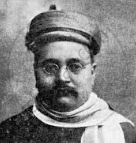Advertisements
Advertisements
Question
Why did Lord Dufferin favour the formation of the Congress?
Options
He wanted to promote the growth of nationalism in India.
He wanted it to act like a safety-valve for popular discontent.
He wanted to mould public opinion in favour of the British.
None of the above.
Solution
He wanted it to act like a safety-valve for popular discontent.
APPEARS IN
RELATED QUESTIONS
Mention two administrative changes that the British Government brought about regarding the East India Company’s rule in India.
In what way did the land revenue charged by the British, affect the Indian peasants?
What was the role of Zamindars during the British rule?
Give any two reasons to indicate that the revolt of 1857 was an important landmark in India’s struggle for freedom.
Give two reasons for the resentment of the Indians against the British during Lord Lytton’s Viceroyalty.
When was the Poona Sarvajanik Sabha founded and by whom? What were its objectives?
In the context of growth of India Nationalism in the early phase, discuss the role of the Grand Durbar of 1877.
“Development of means of transport and communication was the major factor in the rise of the National Movement in India.” Discuss.
With reference to the growth of Indian Nationalism in the early phase, name a British viceroy who was very liberal in outlook and undid many repressive measures of his predecessor. Also discuss the role he played in the growth of Indian Nationalism.
Read the extract given below and answer the questions that follow:
“… the Indians who actively worked for the creation of an all-India political organization represented new social forces that were increasingly opposed to the exploitation of India for British interests. They needed an organization that would fight for India’s political and economic advancement.”


From Freedom Struggle
Answer the following on the basis of above passage and pictures:
(i) In the context of the above, identify the two individuals in Pictures 1 and 2, who were the early leaders of the organization to be formed.
(ii) How did the person in Picture 1 explain the economic exploitation of India for British interest?
